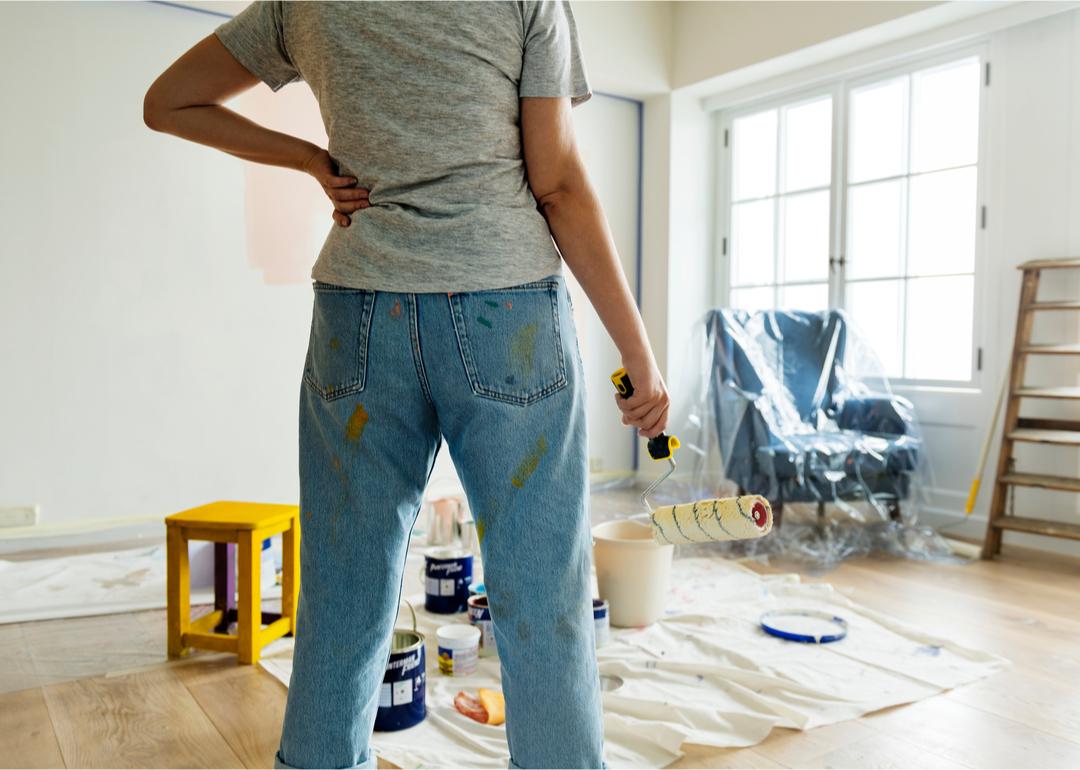
10 hacks to make any room in your home look bigger
This story originally appeared on ZeroDown and was produced and distributed in partnership with Stacker Studio.
10 hacks to make any room in your home look bigger
When thinking about how to make a space look and feel larger, moving your furniture around may seem like the obvious fix at first. But there are tons of tricks that can maximize a room beyond rearranging bookshelves and chairs.
To show how easy this can be, real estate platform ZeroDown came up with 10 tips for making a tiny room feel larger. Read on to see what clever yet subtle changes you can try.
One of the best ways to make up for modest square footage is to put vertical space to work. Make the most of your walls by mounting mirrors, which can reflect light and give the illusion a room is a lot bigger. Installing decorative shelves allows you to display items neatly so the room looks more organized and less cluttered. Strategic placement of accent pieces can capture more natural light, paint can lighten up a room, and a well-placed picture frame can all provide an instant visual boost to expand small spaces.
Continue reading for 10 things you can do to make a room feel bigger.
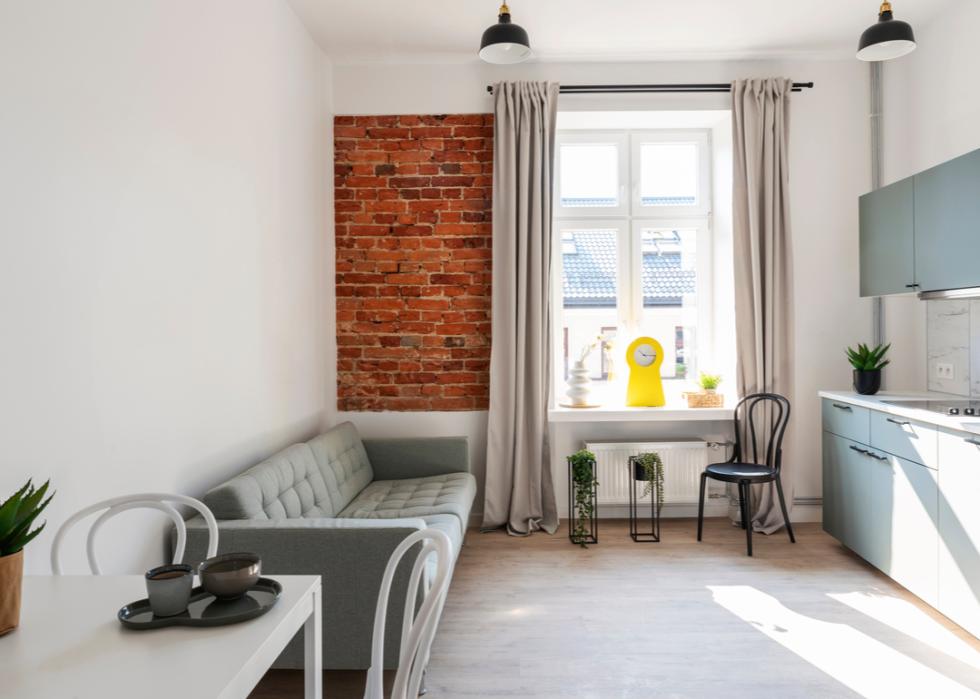
Hang curtains high and wide
Arranging curtains to hang higher and wider than your windows is a simple way to give any space in your home the illusion of more breathing room. To achieve this, hang curtains as close to the ceiling as possible to make your ceiling seem higher than it really is. You’ll also want to avoid aligning the curtains with the edge of the window. Instead, get a curtain rod that extends past the edges of your window, as this will also give the impression that the window and wall space are bigger than they actually are.
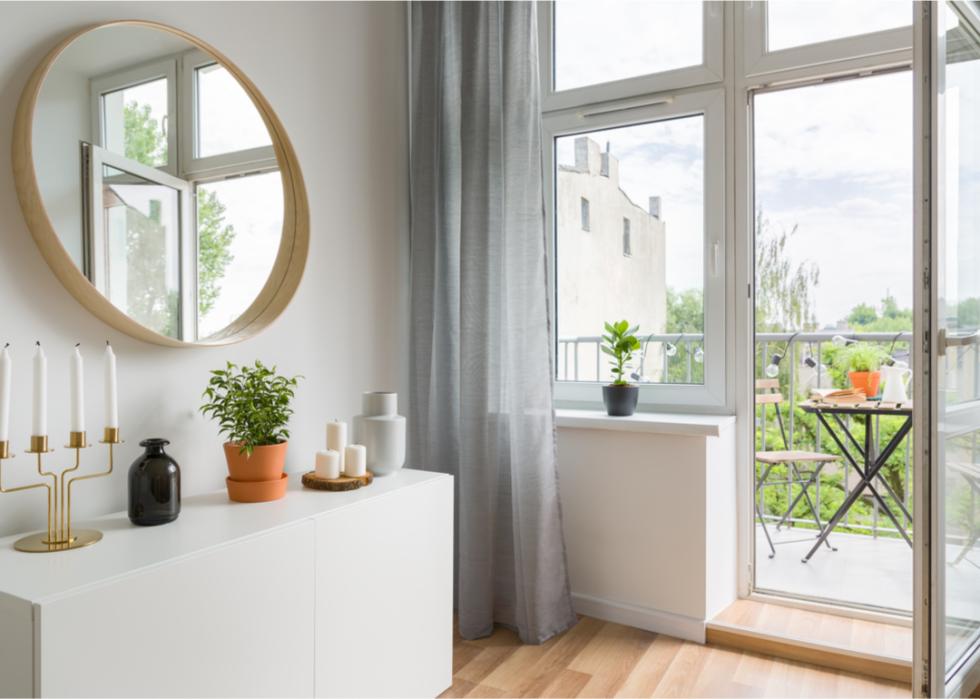
Use mirrors strategically
At first glance, it may not make a whole lot of sense to use a mirror to make a room look larger. However, depending on the placement of the mirrors in your home, they can do wonders for your space. Because mirrors reflect light, they can make a room feel like it has double the natural light filtering in, brightening up the space and giving off the appearance that the space is airy. To achieve this, place your mirrors near the windows in your home so that they not only reflect the glass and outdoor view (if you have one), but also capture light.
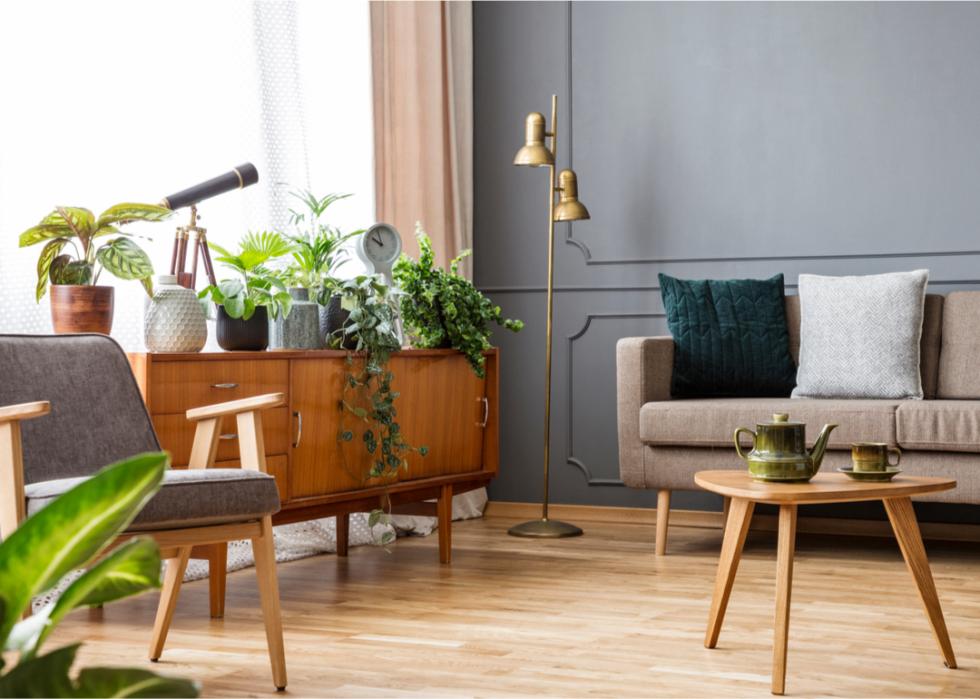
Show some (furniture) leg
Another way to think vertically is choosing furniture pieces with legs that don't sit directly on the ground. When a furniture’s base is raised a few inches off the ground, the floor feels less cluttered because more floor space is visible. While not every piece of furniture needs distinguishable legs, you can be strategic about which ones should. Even one piece of furniture with legs can go a long way in creating more height.
For instance, if you have a small bedroom, you can get a bed frame with legs and have the rest of your furniture sit closer to the ground. Other pieces of furniture you could use to create a similar illusion are nightstands, coffee tables, and dressers.
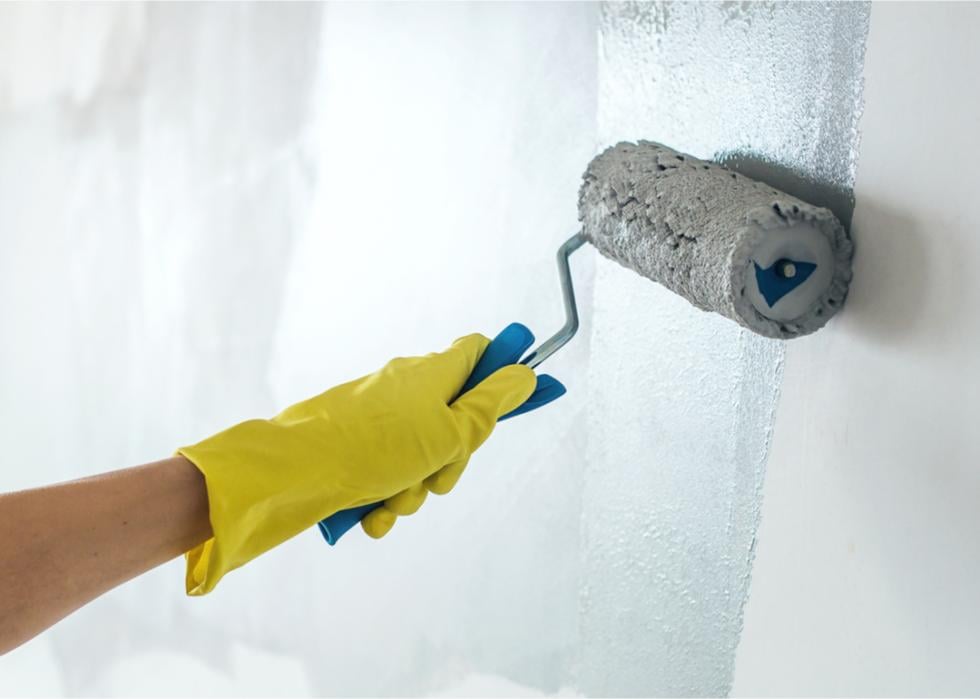
Paint half a wall
Painting your wall with two different colors is a strategic way to make a room feel more open, particularly if you use a dark color and a light color. Interior designer journalist Kate Watson-Smyth not only recommends half-painted walls to “add some drama” to a space but insists it’s a great solution for homes with low ceilings. To achieve this, you’ll want to start by painting the lighter color first and use painter’s tape to achieve clean, crisp lines. Wait for the paint to dry before starting on the second color, and, when pulling off the painter’s tape, be sure to do it slowly. Watson-Smyth suggests you split the colors at about shoulder height—not halfway up the wall—no matter how tall you are.
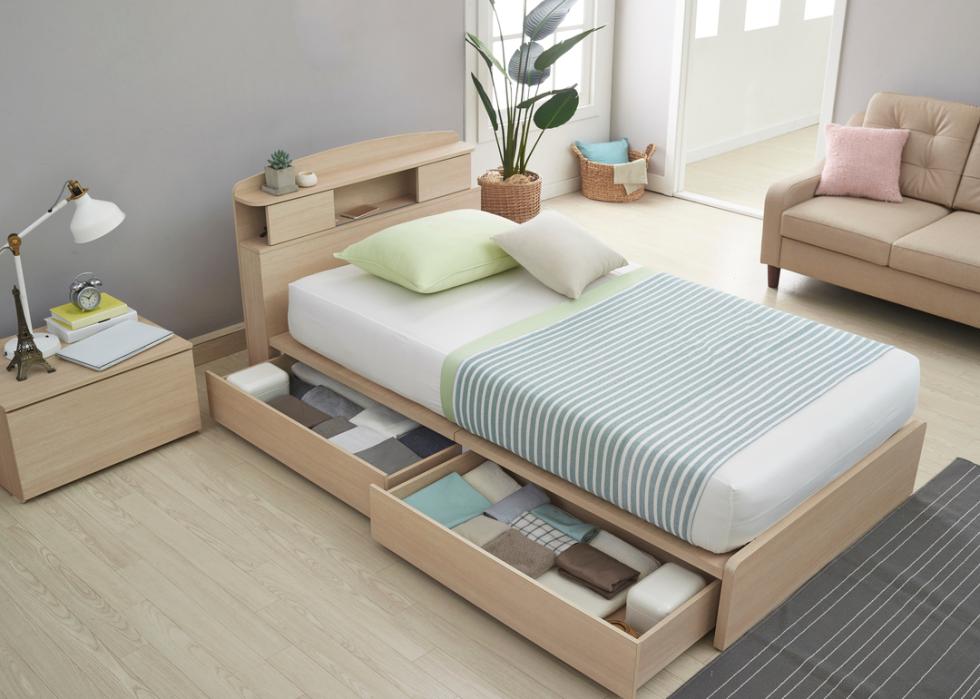
Get more storage with multi-purpose furniture
Keeping your home clutter-free in a small space can often pose challenges. One of the best ways to avoid odds and ends piling up is choosing multi-purpose furniture like ottomans or coffee tables with built-in storage space. For example, if you pay your bills and read magazines in your living room, don't let paper piles overtake your couch. Instead, a coffee table with shelves or drawer space can help you stash items that you’re not ready to toss yet. In the bedroom, getting a raised bed frame can give you extra storage space to place containers and boxes out of sight until you need them. Nightstands and closet organizers with drawers can also give you more space.
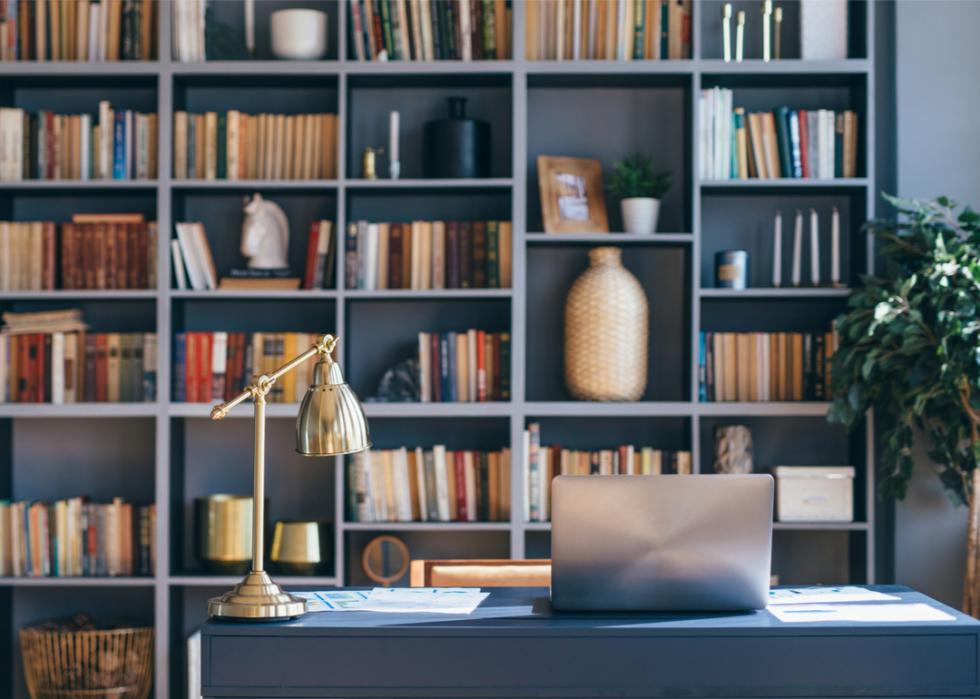
Make ceiling look higher with vertical space
If you don’t have enough room to add furniture like bookshelves or credenzas to help you stow your items, consider creating shelf space on your walls that reach close to the ceiling. Not only will you instantly create more storage space, but you can draw peoples’ eyes upward, creating the illusion of a room having more height. You can also play with the amount of vertical space you have by utilizing vertical stripes and panels. This, too, can draw people to look up rather than side to side, making your home feel roomier.
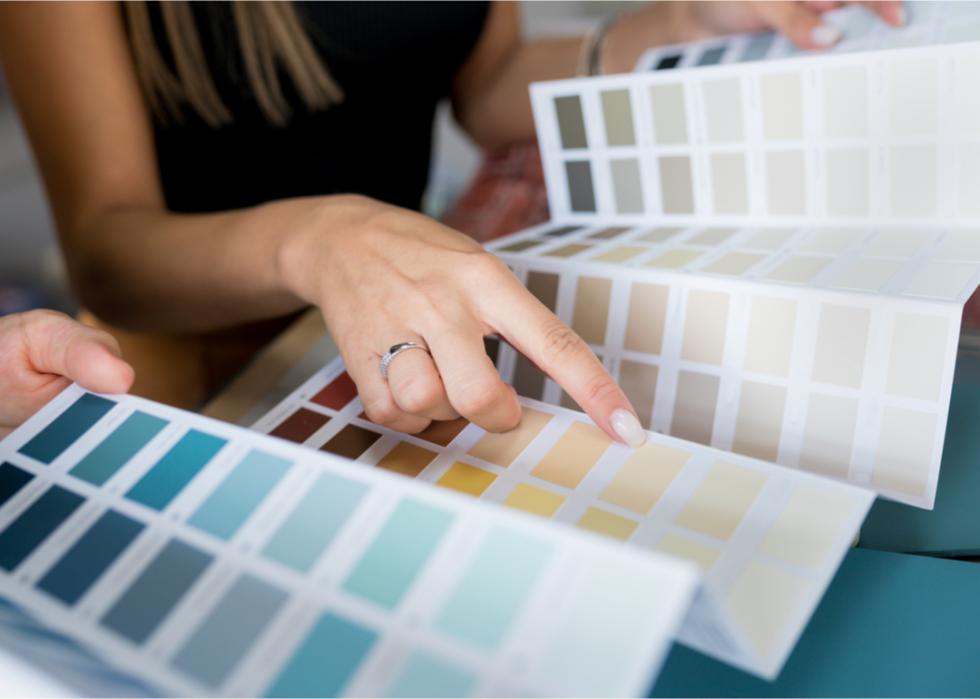
Use neutral or light color schemes
Picking light or neutral colors to paint the interior of your home is a common way to get around the lack of space you have. In particular, painting your walls white, off-white, or beige can brighten up your home and add some reflective lighting as well. However, keep in mind that using neutral colors can also make your home feel a bit bland, so you’ll want to compensate with your decor to liven the space up a bit. And you don’t have to just stick to painting your walls—considering painting your floors and ceilings too. This can help draw the eye upward, particularly if you paint your ceiling and place decor toward the top of the wall.
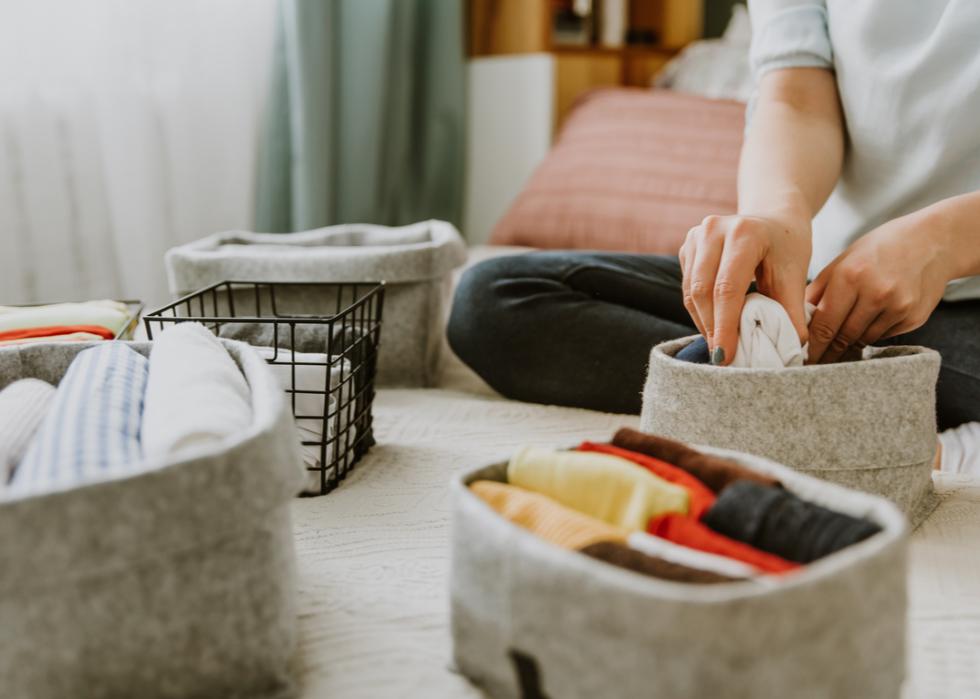
Declutter and organize
Clutter can have a direct impact on your mental health and motivation. If you live in a small space, it’s easy for your belongings to start piling up and become overwhelming. That’s where Japanese professional organizer Marie Kondo comes in to help put things into perspective. One of Kondo’s most famous tips for organizing and decluttering your home is to ask yourself if an item “sparks joy.” If the answer is no, then it may be time to toss or give that item away. Remember, as you’re cleaning, however, there can be exceptions to this as items you may need may not spark joy but are still important to keep out of necessity.
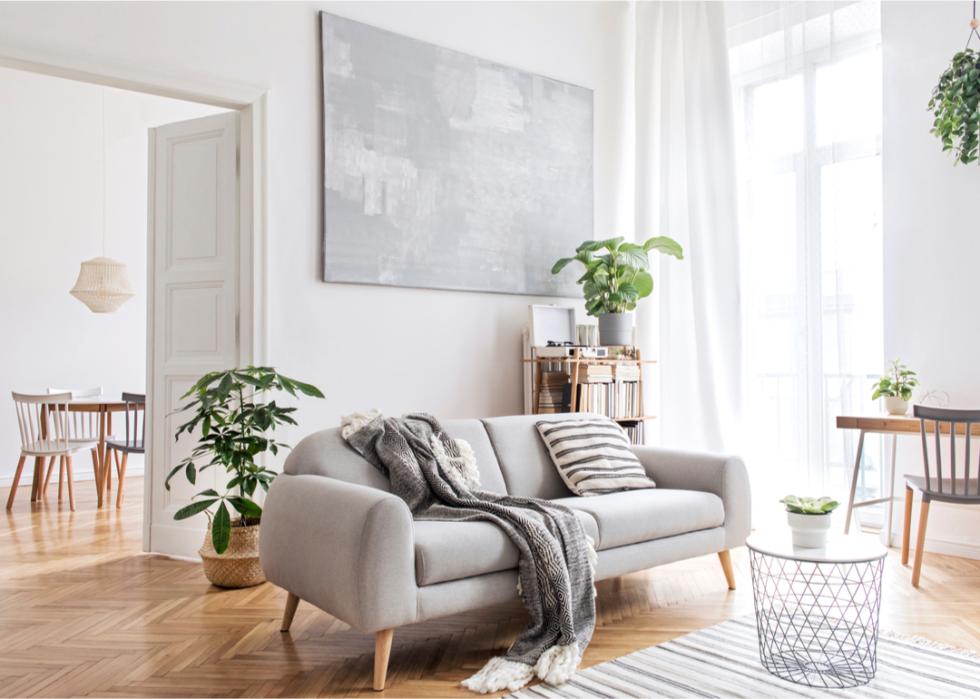
Pull furniture away from walls
Believe it or not, if you want to create the illusion of space in a small room, you should consider pulling your furniture away from the walls. Because you are limited with floor space, it may be tempting to push your furniture against the wall to capitalize on what little room you have. However, this can actually create a packed and crowded look to your home, whereas adding some space between your furniture and your walls can actually make your home look more expansive. In particular, try pulling your large pieces of furniture out, like your couch and bed, to create a space that feels much less cluttered.
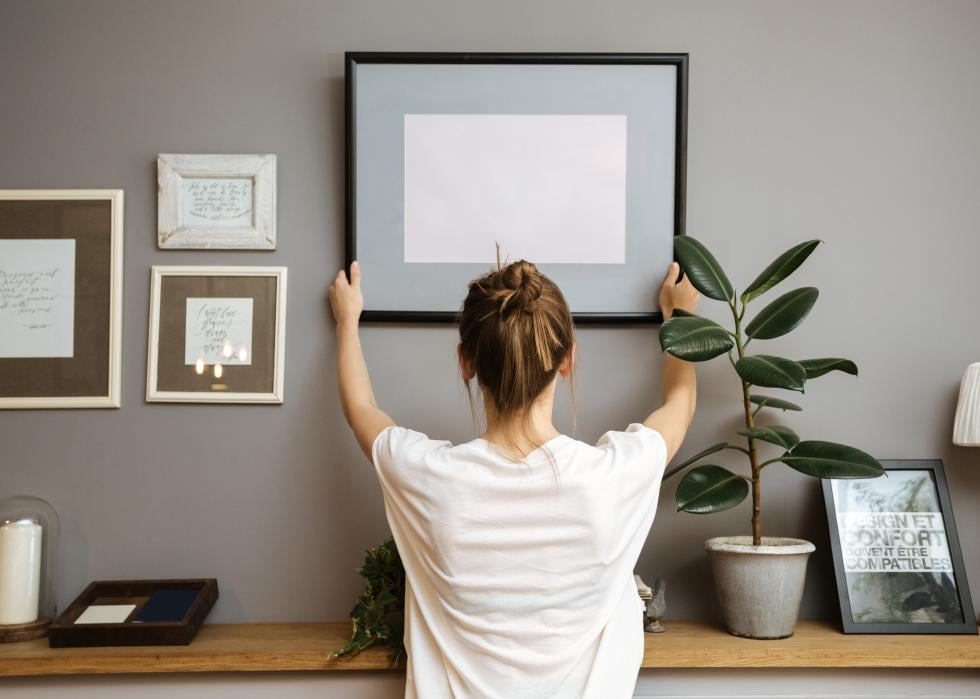
Hang wall decorations higher than eye level
Like many of the tips on this list, hanging your wall decor higher than eye level can draw the eye upward and trick your brain into thinking there is more space. In particular, it can make your ceiling appear much taller than it actually is. Do this with paintings, posters, shelves, and even tall plants (which also add a burst of color and life to your home). You could even take this a step further by adding some decor to the ceiling, though you’ll want to keep this approach simple so as not to overdo it on the room accents.



